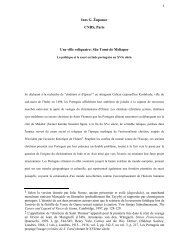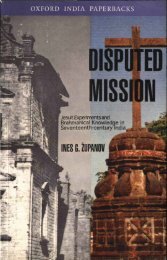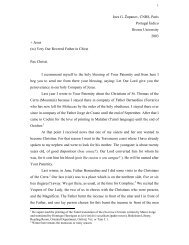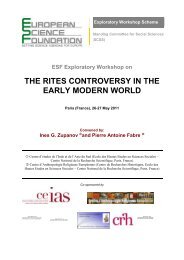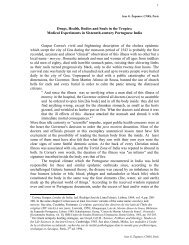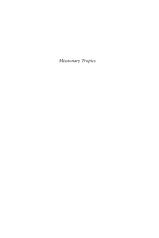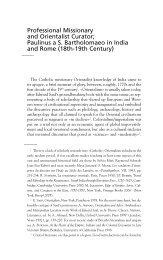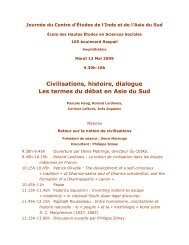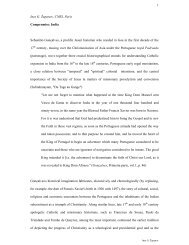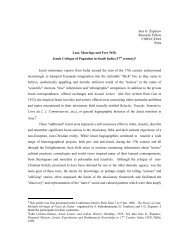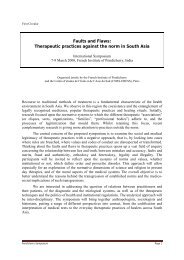Jesuit Orientalism; - Ines G. Županov
Jesuit Orientalism; - Ines G. Županov
Jesuit Orientalism; - Ines G. Županov
You also want an ePaper? Increase the reach of your titles
YUMPU automatically turns print PDFs into web optimized ePapers that Google loves.
10<br />
they are based on a variety of documents, some of which required knowledge of Asian<br />
languages. The manner in which Queiros treated his sources and structured his arguments in<br />
this book reveals an elementary Orientalist method.<br />
Because of his interest in history as a handmaiden of politics, in this case the expected<br />
Portuguese reconquest of the island, Queiros felt compelled to inquire into the past and<br />
present of Sri Lankan society as a whole. His intention was to show the fertility of the land,<br />
the complexity of the society and culture and the convertibility of their people to Christianity.<br />
History, geography and climate are made to interact in significant ways. Instead of scooping<br />
the information from the surface of his sources, which he did as well at times when it suited<br />
his political recommendations or arguments, Queiros endeavoured to penetrate deep into Sri<br />
Lankan antique history and culture.<br />
Obsession with the past and accumulation of information is where all Orientalist<br />
knowledge begins. Both the past and the space are thus burdened with ragbag inventories of<br />
just about everything. For example, one of the permanent concerns of travel writers and<br />
missionaries was to establish a precise geographical location. The first French <strong>Jesuit</strong>s (les<br />
matematiciens du roi) sent to Siam and China just when Queiros collated his materials and<br />
laboured on his text, measured and calculated longitudes and latitudes. 26 Without being able<br />
to acquire information of this kind, he provided distances between places and used Dutch and<br />
Portuguese logbooks and portolan charts with their network of rumb lines. Another type of<br />
pile up, relatively common and expected from any learned writer, were citations from<br />
classical authors such as Pliny, Ptolomy, Arrian, patristic fathers, etc.<br />
“Erastothenes calls it Tapobrana… Onezicisto, captain of Alexander the Great … the Islands<br />
of Mamole…Natives give it [the name of ] Lancab, which is equivalent of “odoriferous<br />
land”… the Chinese call it Simonda,… others say it was called Chinilao… Other nations in<br />
conformity with the information they had of its fruits and wealth by this word Scrilança, call<br />
University, 1954. Matteo Ricci and Nicolas Trigault, De Christiana Expeditione apud Sinas,<br />
Augsburg, 1615. English translation by Louis Gallagher, China in the sixteenth Century: The<br />
Journal of Matthew Ricci, 1583-1610, New York, 1942.<br />
26 Isabelle Landry-Deron, “Les mathématicians envoyés en Chine par Louis XIV en 1685”,<br />
Archive for the History of Exact Science, 55, 2001. See also, Catherine Jami, “Pékin au début<br />
de la dynastie Qing: capitale des savoirs impériaux et relais de l‟Académie royale des sciences<br />
de Paris”, Revue d‟Histoire Moderne et Contemporaine, 2008/2-no. 55-2, pp. 43-69.




